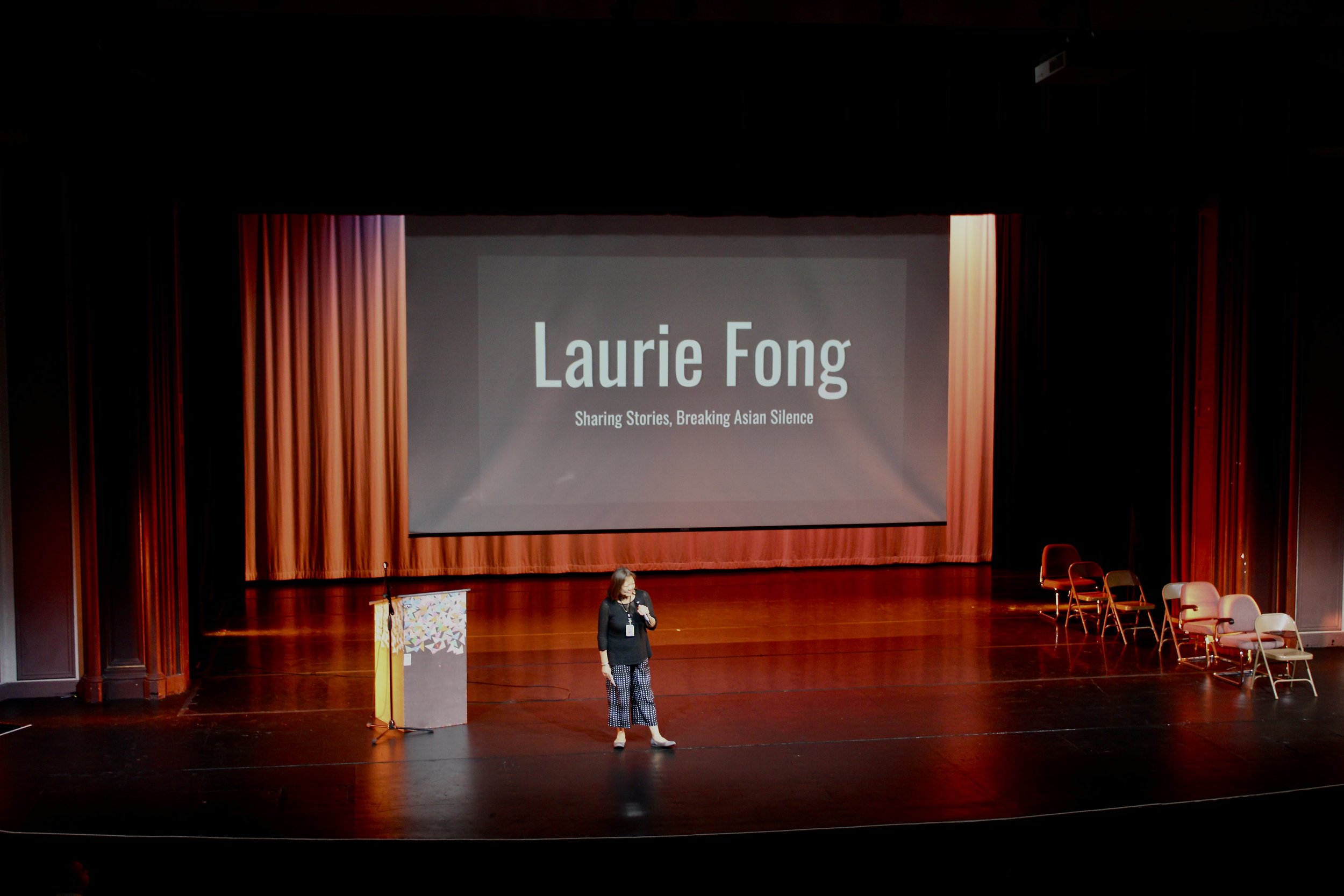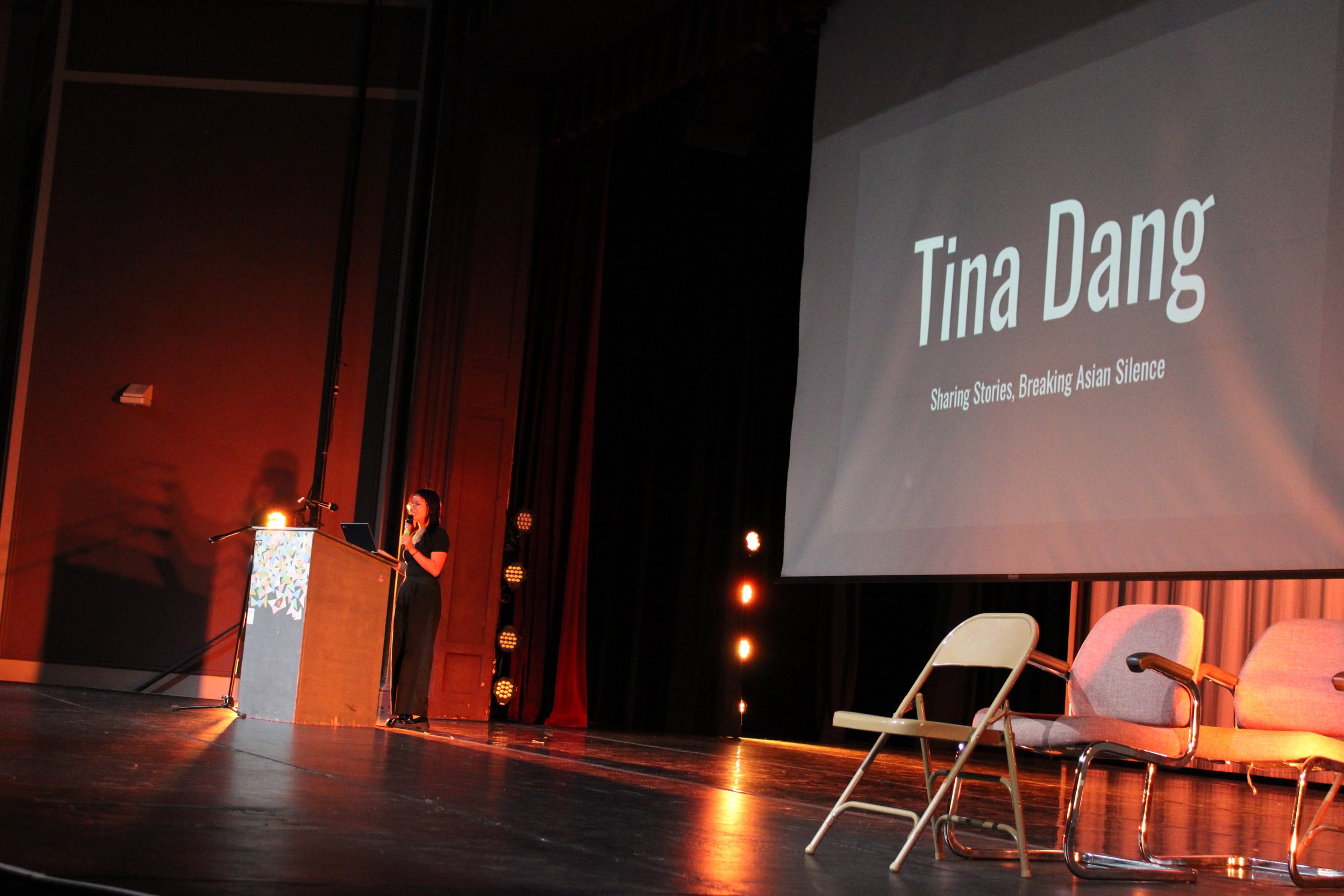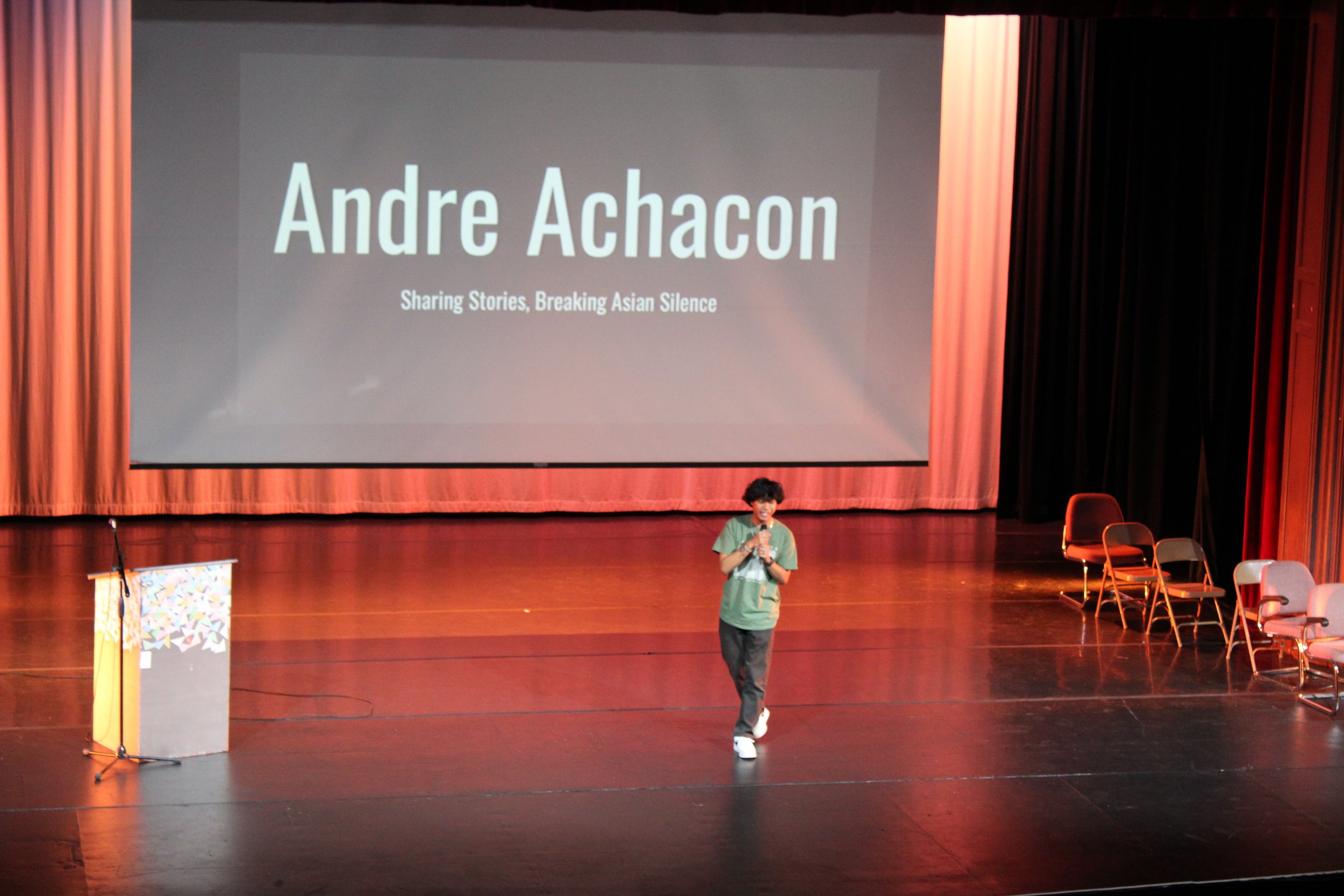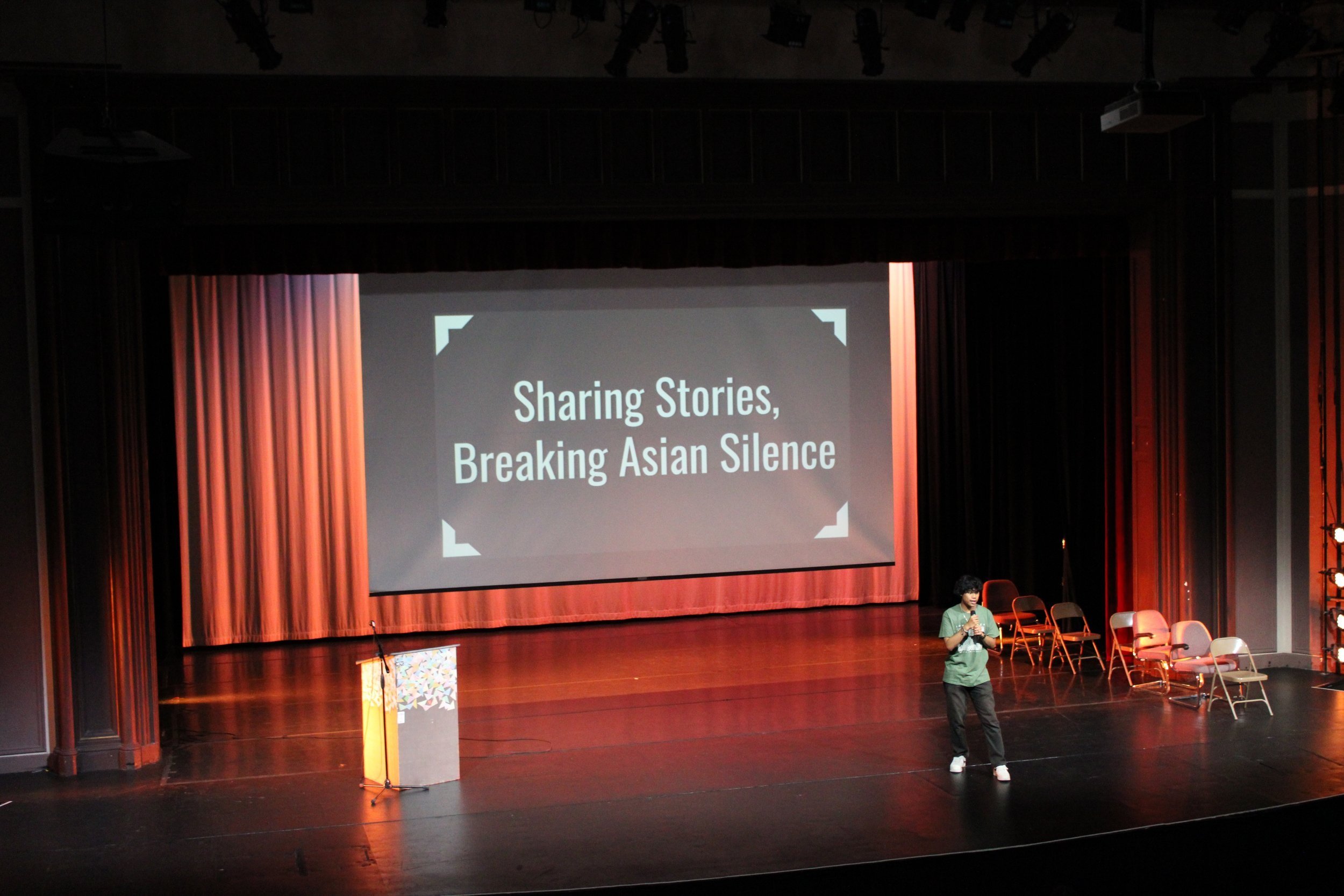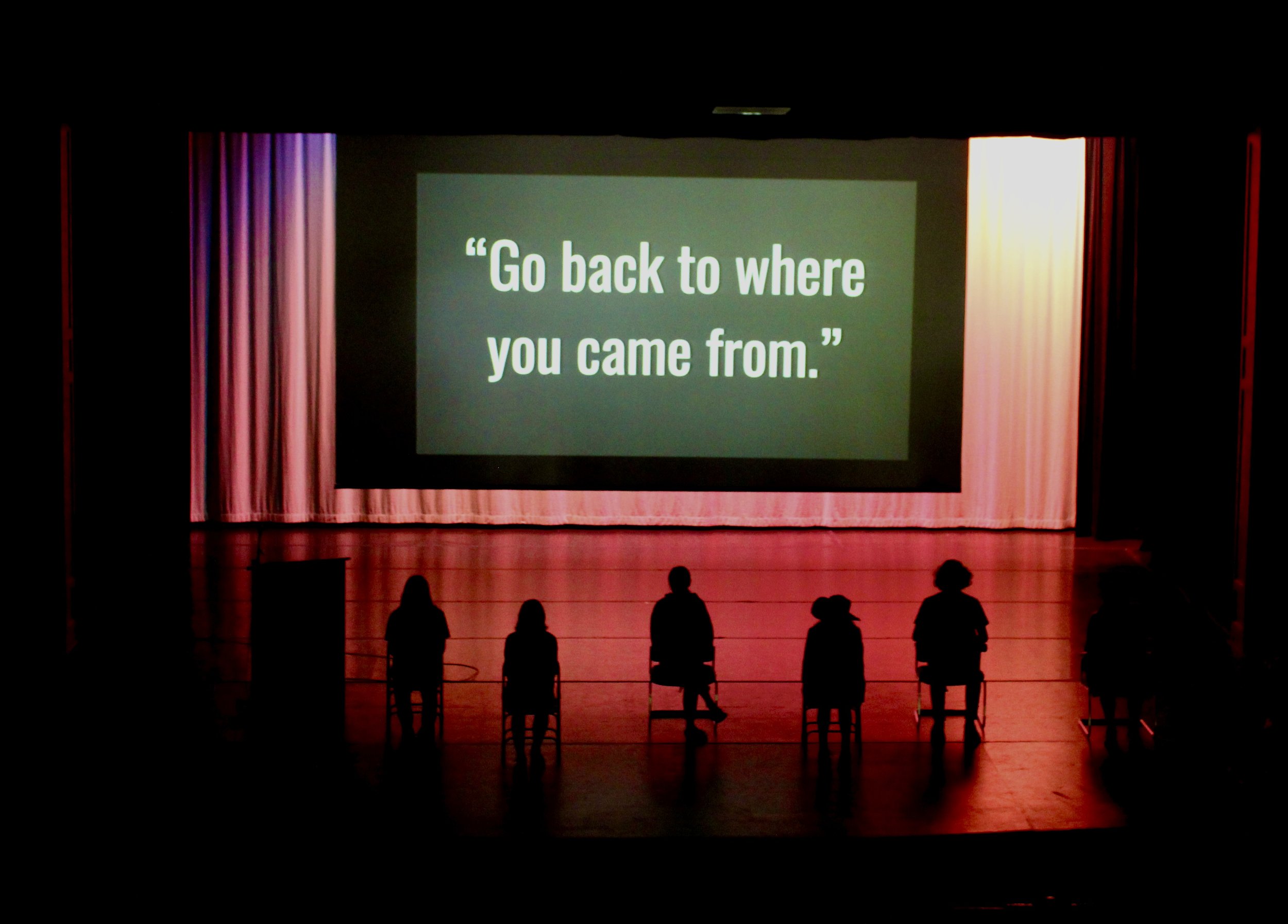Santa Rosa High School holds assembly for AAPI month
Speakers and organizers of assembly (Sophia Hughes, The Puma Prensa)
By Christian Bon, web editor and, Sophia Hughes, web editor
As the audience entered the large Santa Rosa High School auditorium, the lights dimmed, the crowd quieted, and the speakers took the stage. On May 19, four students, including one from Maria Carrillo High School, and the principal of Montgomery High school spoke out about various issues that plague the Asian and Pacific Islander communities inside and outside of the Santa Rosa City Schools system. Each shared heartbreaking stories of discrimination they had faced, but each story turned, by the end, to an uplifting tale of perseverance in the face of adversity.
The presentation began with a smattering of hateful words and phrases commonly used against the Asian and Pacific Islander community. Disgusting comments like “go back to where you came from,” “aren’t you supposed to be smart?”and “yellow fever” were displayed on the large screen in front of the audience as the speakers explained how these were “things [they] have heard all [their] lives.” Following this, each speaker was given the opportunity to give their own prepared speech.
To begin the individual speeches, Andre Achacon, the student body president and a senior at Santa Rosa High school, described his experience trying to find and connect with his culture in the Santa Rosa City schools system. He said that, in the beginning, especially during elementary school, he “felt very excluded and isolated.” Kids would “make fun of [his] appearance and the food [he] ate at lunch.” Things became better in middle school for him, but it was still “hard to be proud of [his] culture.” However, upon entering high school, Achacon “started feeling proud and tried to share [his] culture.” In his own words: “Santa Rosa High has been an amazing experience,” and it is “one of the most diverse schools.” His speech concluded with the message that states: “We are all different.” He encourages all students to “feel proud of [their] backgrounds.” and to “share [their] story because it’s very important,”
After a cheering response, the next speaker, Santa Rosa senior, Tina Dang, came up to deliver her speech about the dangers of the “model minority.” She explained that, while most people tend to think Asian students are going to be at the top of their classes, “every Asian American student isn’t always going to be at the top.” Dang then shifted into a more personal story about her own parents and experience growing up. She explained how “[her] dad always expected the most from [her]” and “wanted a strong American family.” In order to try and accomplish this, Dang would work “20 hour work weeks and then come home to do homework and extracurriculars.” She couldn’t even afford to “waste” time hanging out with friends. But, “even though [she] worked so hard, it meant nothing to them.” Thus, she concluded that she “couldn’t look to [her parents] for praise because they didn’t know how to give it.” She realized that she could get the praise she wanted from her friends. Dang was able to find comfort and happiness in the support her friends gave her, and as such, was able to move past this self-destructive work ethic. Her speech ended by reinforcing that “the model minority myth hurts a lot, we’re all different,” not all people fit into just one stereotype. Her final piece of advice was for all people to “praise and help [their] friends.”
After Dang, Maria Carrillo sophomore Maitri Rane, the final student speaker, walked on stage to deliver her speech. Rane began with a short introduction, describing how she is an “Indian American” who has “lived [in America] for years.” She “loves [her] culture, events, food, traditions, weddings, and music.” She then talked a little about the past, explaining that “in India, [she] didn’t have to try and fit in or act white.” However, when coming to America, it was a pretty massive culture shock and it was a little difficult to adapt. After the introduction, Rane moved on to the personal side of her speech which centered around an old crush. She described a boy, handsome, blonde, blue eyed, and fair-skinned, and how she had a “huge crush on him.” Much to the audience's amusement, she talked about how she started trying to “rizz him up.” She said that, for a while, “things were going pretty great.” One day, she “asked if he wanted to sit with [her] at lunch. He said yes.” At that moment, “[she] was so happy.” It just so happened that, that day, Rane’s mother had “made [her] this delicious food.” When she opened her lunchbox, eager to eat what her mother had prepared, the boy “looked disgusted.” He asked, “why does your food smell so bad?” Rane, feeling a confusing mix of emotions, “ran away crying.” After that, the boy’s friends started acting mean, and the boy himself became bitter. But Rane recognized the truth behind the situation. She had done nothing wrong. The boy had “disrespected [her] and her mom.” However, despite that realization, Rane still became disillusioned with her culture. She “hated [her] culture,” but after some time reflecting over Covid, she has grown to recognize “it’s beautiful and [she] loves it.” She ended her speech with the message “if you’re trying to fit in, you're beautiful and perfect just the way you are.” The speech was met with thunderous applause.
In an interview, Rane addressed how she was able to seize this opportunity in the first place and how much this means to her and her family. Through a business networking project for an English class, Rane was able to meet and speak with the president of Montgomery High school, Laurie Fong, who first presented the idea of speaking at Santa Rosa High School. Rane was very excited if not a little nervous at the prospect, but ultimately she was overjoyed to be able to participate in the demonstration. She hopes she was able to convey the weight words can have on others and that racism will never be acceptable.
She also detailed why she chose this particular story, stating how it felt like a “right fit for the audience” since it was a relatable, classic middle school crush story. She also hoped that she was able to convey that even “the little things hurt”, explaining how this experience happened in seventh grade and yet the words stuck with her.
Finally, Fong came on stage. Fong began by congratulating all the previous speakers. She said it “takes a lot of courage for [them] to speak.” “Their stories are my stories,” she said, moving into her speech. Fong stated that she “still remembers something said to [her] in second grade.” She had been approached by a student and mockingly asked “aren’t you supposed to be smart?” This was the first time Fong had been judged by her race, and it was a pattern that would continue even up until now. She explained that “Asians, Latinos, Black people, African Americans, every immigrant group has faced these hardships.” She encourages people to “celebrate [their] culture.” Fong states that it “gives you power and strength.”
When interviewed about the event afterward, Achacon elaborated on the message that he wants the audience to take away. “We need to break Asian silence. Be an ally and be inclusive. Share your stories. Celebrate diversity.” Achacon hopes that, by continuing to have events like this and bringing in voices from the community that otherwise might not be heard, students and faculty at Santa Rosa High School, and all high schools, can “cultivate diversity” and “break silence.”

